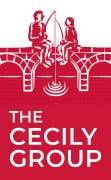
When families plan their financial future, the conversation often focuses on assets — properties, businesses, investments, and valuable holdings. Yet wealth is only one side of the equation. Liabilities are an equally crucial yet frequently overlooked component of financial health. Research suggests that even clients who feel confident in managing their assets frequently encounter challenges when navigating the complexities of liabilities (Sommer and Lim, 2022).
Mismanaged liabilities can quietly erode wealth, while well-managed debt can be a potent tool for growth. Consider this: A family that invests heavily in property may focus on the rising value of their real estate portfolio. Yet, if they haven’t planned for rising mortgage rates or maintenance costs, their growing asset base may be quietly undermined by accumulating debt.
The Impact of Liabilities
At its core, a liability is any debt or obligation owed to another party. For families, liabilities often include:
- Mortgages on real estate.
- Business loans for growth or cash flow.
- Personal debts, including credit cards or financing.
- Family obligations, such as guarantees for extended family loans or support for dependents.
While liabilities are often seen as burdens, they are also tools that — when managed effectively — can fuel wealth creation. A family business may leverage a mortgage to acquire a property that generates significant rental income. In this case, debt is a strategic move in their larger financial strategy.
Balancing Assets and Liabilities
Holistic wealth planning can help accumulate assets and balance them with liabilities to ensure financial stability and growth. This approach requires families to see liabilities as part of their larger financial picture. For example:
- Expanding a family business may offer significant long-term profits, but without careful debt management, a single market downturn could destabilise the entire enterprise.
- Investing in high-value assets may secure wealth, but without liquidity planning, families may struggle to meet short-term debt obligations.
The key is understanding how liabilities interact with wealth, and ensuring they remain strategic rather than destructive.
The Role of Good Debt vs. Bad Debt
Not all debt is created equal. Understanding this distinction helps families make smarter borrowing decisions:
Good Debt: Debt that funds growth, generates income, or increases asset value. Examples include mortgages on appreciating real estate, business expansion loans, or strategic investments.
Bad Debt: Debt that funds depreciating assets or unnecessary consumption. Examples include high-interest credit card debt, excessive personal spending, or poorly structured business loans.
The Value of a Trusted Financial Advisor
Skilled financial advisors can prevent liabilities from undermining family wealth by identifying beneficial borrowing and helping them avoid high-risk liabilities. They act as:
- Educators: Clarifying the nature of different liabilities and their long-term impact.
- Strategists: Creating debt repayment plans that balance family goals with financial realities.
- Risk Managers: Identifying vulnerabilities and recommending steps to protect against market volatility or unexpected costs.
Practical Strategies for Managing Liabilities
For families aiming to manage their liabilities effectively, the following strategies can help:
- Risk Assessment: Identify the risks tied to each liability, such as fluctuating interest rates or changing repayment terms. Creating a risk matrix helps prioritise which debts to address first.
- Strategic Repayment Plans: High-interest debts often require immediate attention, but families may also benefit from restructuring loans with favourable terms. Prioritising debt repayment based on interest rates, loan duration, and financial goals can maximise cash flow.
- Refinancing Opportunities: Families can sometimes lower their debt burden by refinancing loans at better rates or consolidating debts. This approach reduces repayment stress and optimises overall wealth management.
- Contingency Planning: Since family wealth often spans multiple generations, families should prepare for unexpected events that could strain their finances, such as economic downturns, illness, or family disputes. Building an emergency fund or maintaining access to flexible credit lines can safeguard against these risks.
- Socioemotional Wealth: Ensuring the family can retain control of the family business, even if the planned expansion does not work out as expected and prepare contingency plans if the family is faced with losing their Socioemotional Wealth.
Turning Liabilities into Opportunities
Well-managed liabilities can become valuable tools that support family growth. For example:
- Investing with Leverage: Strategic borrowing to fund real estate developments, business expansions, or asset acquisition can accelerate growth when carefully planned.
- Tax Efficiency: Debt strategies can improve tax positioning by reducing taxable income through interest deductions in certain jurisdictions.
- Wealth Diversification: Borrowing may allow families to diversify their portfolios, spreading risk across multiple asset types.
By integrating liability management into broader wealth planning, families gain control over both their financial risks and growth potential.
Balancing Growth with Responsibility
Wealth planning, especially for families, should ensure that the acquired assets remain secure and sustainable. By approaching liabilities strategically, families can protect their wealth from erosion while unlocking new opportunities for growth. With the right guidance from experienced advisors and a proactive mindset, liabilities can shift from overlooked risks to essential tools in building a legacy.
Sources:
Sommer, M., & Lim, H. (2022). Financial Knowledge and the Relationship with Using Professional Investment Advice and Granting Trading Discretion. Journal of Personal Finance, 21(1), 62–77.
